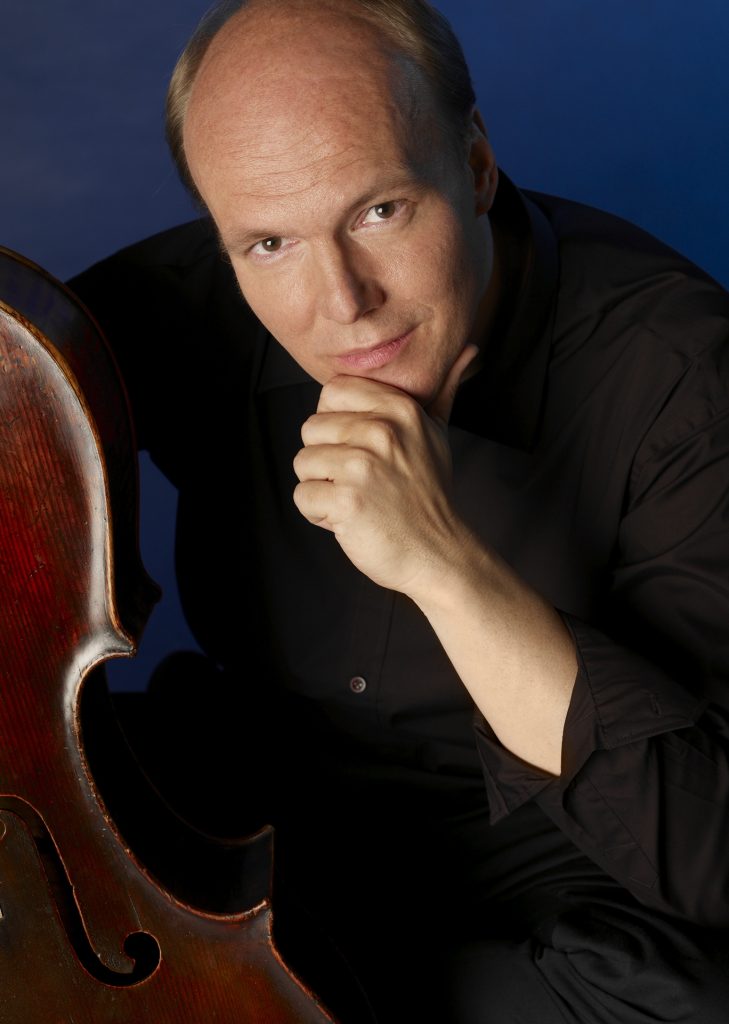
By Dennis D. Rooney
The Orpheus Chamber Orchestra played the same program here Tuesday at the Kravis Center as it had in New York’s Carnegie Hall the previous Saturday evening; Handel’s Water Music Suite opened it and Stravinsky’s Pulcinella Suite concluded it.
In between came the local premiere of Out Came the Sun by Shuying Li, an Orpheus commission that was its deuxième, and the Cello Concerto No. 1 by Dmitri Shostakovich, with Norwegian cellist Truls Mørk as guest soloist. I well remember his New York debut at Town Hall in 1987 as winner of the Naumburg Competition. Then, curly blond locks cascaded on his head. Now, the locks have been replaced by the broad bald pate of middle age.
From the first notes that came from his 1723 Domenico Montagnana, Mørk showed himself the master of this very difficult concerto. It dates from 1959 and was premiered by Mstislav Rostropovich in the autumn of that year. Mørk has long been an admirer of the Russian cellist, thus his interpretative authority was unsurprising, and he received superb collaboration from Orpheus. Both soloist and orchestra sounded beautifully focused on stage in the Dreyfoos Concert Hall.
In the main, the audience was attentive and quiet, which only improved the focus. The grim energy of the outer movements and the bleak beauty of the lamenting central Moderato were heard without distraction, but in the cadenza that comes between the second and third movements, despite Mørk’s masterly execution, some listeners seemed confused and responded by coughing.
Nothing else on the program had the artistic and executive force of the Shostakovich. It was followed by Out Came the Sun, which was notable for some interesting instrumental color and featured an unusually large concerted part for celesta. Perhaps the composer’s stated purpose, in writing that the work was inspired by her struggle with post-partum depression after the birth of her son, might have been more clearly grasped had it been shorter.
Handel’s Suite from The Water Music has long been an audience favorite: tuneful and uncomplicated. Orchestras both conventional and “historically informed” play it, and Orpheus provided an ideal ensemble that falls somewhere in the middle, giving more prominence to woodwind and brass than the orchestral strings, to the benefit of animation.
Stravinsky’s Pulcinella Suite is quite different. Drawn from his 1920 ballet celebrating commedia dell’arte and supposedly based on music of Giovanni Batista Pergolesi (which was later attributed to at least five different composers), it was described by the composer as “my discovery of the past, the epiphany through which the whole of my late work became possible. It was a backward look, of course — the first of many love affairs in that direction— but it was a look in the mirror, too.” The style came to be called neoclassical.
Pulcinella was described by Stravinsky’s detractors as “Pergolesi with wrong notes”, just as his later Le baiser de la fée would be called “Tchaikovsky with wrong notes.” The Suite has long been in Orpheus’s repertoire and they recorded it in 1990.
After the keenness of their playing in the Shostakovich Concerto, they sounded just a bit below that level in Stravinsky. This was most notable in the lyrical sections and primarily affected the strings, which often sounded unbalanced. In music of a strong rhythmic character, the playing was far better, and brought the Suite to a suitably rowdy close.